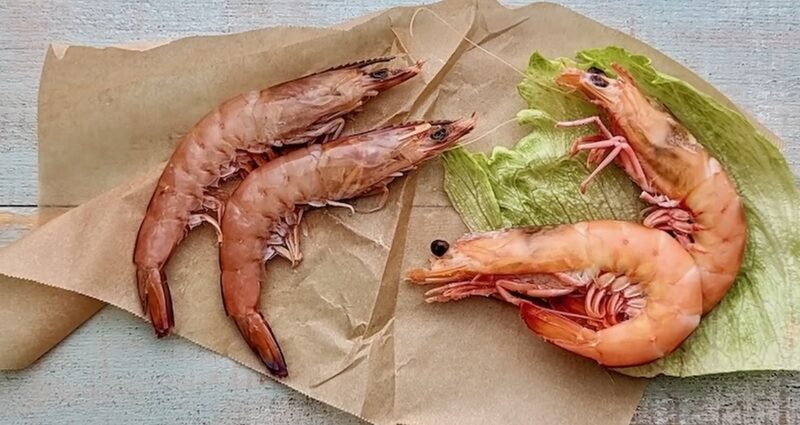I used to think shrimp and prawns were the same thing. Especially when they were labeled “jumbo.” I’d walk past the seafood section, see the packages — some say “jumbo shrimp,” others say “extra-large prawns” — and I’d just assume it was marketing.
Or that maybe “prawns” was the British word or something. I didn’t stop to think there was an actual difference.
Turns out, I was wrong. Not in a huge, life-changing way, but enough that I wish I’d known some of this stuff earlier. It would’ve made grocery shopping a bit easier. And maybe I would’ve avoided overcooking a few expensive dinners too.
So Are They the Same Thing or Not?
Short answer: no, they’re not exactly the same. But it’s not obvious unless you really look.
Shrimp and prawns are technically two different creatures. They’re both crustaceans, sure. Both have shells, legs, and tails. But biologically, they’re built a little differently.
The main things is in their gills, body shape, and how their legs are arranged. Shrimp have one longer pair of legs with claws. Prawns have three pairs that are about the same length. Also, the way their bodies bend is slightly different — shrimp kind of curl in a little more.
I’ll be honest — I’ve never sat down and looked at their gills or anything. Most people don’t. But the leg thing? You can actually see it if you buy them whole. Once I started noticing that, it helped.
The Size Labels Are All Over the Place
Here’s where it gets annoying: the names don’t always match the product. One store might call something “jumbo shrimp,” and another might call a very similar thing “prawns.” And it doesn’t help that size labels like “large,” “jumbo,” or “colossal” aren’t standardized.
What matters is the count per pound. That’s the little number you’ll sometimes see, like 16/20 or U/10. That means how many pieces you get per pound. So 16/20 means you’ll get about 16 to 20 shrimp or prawns per pound.
I always go by that now. The rest — jumbo, extra-large, whatever — it’s just branding.
They Do Taste a Bit Different

I’ve cooked a lot of both by now. If you hand me a few shrimp and a few prawns, I could probably tell you which is which just by eating them.
Shrimp are usually a little firmer when cooked. They kind of “snap” when you bite into them. Also, a bit sweeter, especially wild ones from the Gulf or the Carolinas.
Prawns are a bit more neutral in flavor. Not bland — just different. More dense. Sometimes they feel a little meatier or softer, depending on the type. I’ve had prawns that felt almost like little lobster bites.
But let me be clear: if you’re making pasta or grilling them, either one works fine. Just don’t overcook them. That’s when both turn rubbery and disappointing.
Some Dishes I Prefer One Over the Other
@blessitsjeff Shrimp Skewers for the win #shrimp #easyrecipe ♬ Good Vibes (Instrumental) – Ellen Once Again
I’ll give you a few examples from my own kitchen:
- Grilled skewers — I go with prawns if I can. They’re a bit sturdier and hold up better over the fire.
- Shrimp cocktail or cold dishes — Shrimp. All the way. They’re sweeter, and the texture just feels right chilled.
- Curries or sauces — Either one works, but I lean toward prawns if I want something heartier.
- Fried stuff (popcorn shrimp or tempura) — Shrimp is better here. Smaller size, crispier result.
If you’re in the mood for a different take, shrimp also works great in a burrito, adding that perfect balance of flavors.
Again, this isn’t a hard rule. More like a habit based on what I’ve noticed.
Shopping Tips That Helped Me Out
View this post on Instagram
Let’s talk grocery stores for a second. Buying good shrimp or prawns doesn’t have to be complicated, but I’ve learned a few tricks:
- Check the label for the size count. Not the fancy words. 21/25 or 16/20 will give you a better idea of what you’re getting.
- Frozen isn’t bad. A lot of “fresh” shrimp in the seafood case were frozen at some point. If they’re already thawed, use them within a day. Otherwise, just buy frozen and thaw them yourself in cold water.
- Shell-on is better for flavor. If you’re grilling or making stock, keep the shell. You can peel them after cooking if you want.
- Wild-caught usually has better flavor, but not always. Some farmed prawns are great too. Just check where they’re from if you care about sustainability.
Cooking Without Ruining Them
I used to overcook shrimp and prawns all the time. It’s easy to do — they go from raw to done in like two minutes. You get distracted for even a bit, and suddenly they’re tough and curled into tight little circles.
Here’s what I do now:
- Watch the shape. When they curl into a “C,” they’re usually done. If they curl into an “O,” they’re overcooked.
- Quick brine helps. If I have time, I soak them in cold water with a little salt, baking soda, and sugar for 20 minutes. Makes a big difference in texture.
- Cook in batches. Don’t crowd the pan. Let them get a little sear.
- Use the shells. I save the shells to make a quick broth. Toss them in a pot with garlic, butter, and some water. Let it simmer. Makes sauces way better.
What Do I Call Them Now? Depends

After all this, you’d think I’d have a firm rule. But honestly? I just go by what’s on the label and how they look. If it says “prawns” but they look like big shrimp, I treat them like shrimp.
If it says “shrimp” but they’re thick and firm like prawns — I go with that.
Final Thought
Here’s where I’ve landed: shrimp and prawns aren’t identical, but they’re not so different that you need to stress over it. If you’re cooking for friends or family, nobody’s going to quiz you on which crustacean you used. What they’ll remember is whether it tasted good.
I used to get hung up on it. “Am I using the right one?” Now I just pay attention to size, texture, and freshness. The rest sorts itself out.
Anyway, next time you’re in the seafood section and you’re stuck between jumbo shrimp and prawns, just check the label, look at the count, and think about what you’re making. You’ll be fine. Really.
And if all else fails — garlic, butter, lemon. That combo never lets me down.



